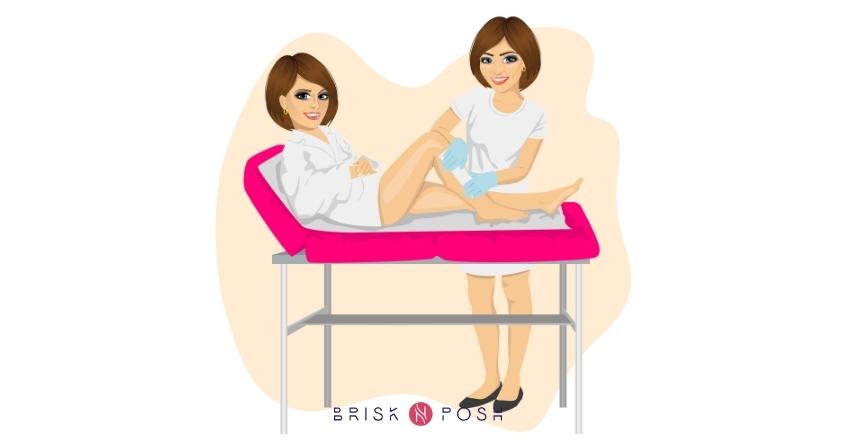Waxing Hair Removal Tips
The BriskNPosh's waxing aestheticians are answering customers' questions and provide advice and recommendations for customers with different levels of hair removal experience.

The BriskNPosh's waxing aestheticians are answering customers' questions and provide advice and recommendations for customers with different levels of hair removal experience.
People opt to wax over other hair removal methods because it is more efficient and has longer lasting results. When you do wax, the hair is removed from the root and typically grows back finer. Usually, it takes about a month for the hair to grow back and another waxing session to be required.
It is recommended that you schedule a waxing appointment every hair cycle (4-5 Weeks).
Surprise! Anywhere hair is growing on your body, it can be waxed.
The answer to this depends on the individual. Some people have a high pain tolerance, while others can react poorly to the smallest amount of pain. However, our therapists are trained to make your experience as painless as possible. Because of our methods and the types of wax we use, our clients find our services almost pain-free.
Our team finds Waxing to be the most efficient and effective non-permanent hair removal method available today. Although people have their own preferences, we believe waxing is an excellent choice in almost all cases.
We use two wax types. Our soft wax is a very smooth wax that does not pull the skin and can be spread thinly. Our hard wax is a fast-drying stripless wax that is designed to mimic the texture of bee’s wax. Each wax is used on different body areas based on the type of hair growth that is typical.
There are several steps you should follow prior to being waxed. First and foremost, do not shave! Shaving can increase the level of pain during your waxing appointment. In between waxing sessions, keep your skin moisturized using a high-quality lotion or specialty moisturizer.Once a week, use a skin exfoliation scrub to clear away dead cells. This will improve your waxing results?
Not really. First, we do not recommend the use of prescription or over-the-counter drugs to avoid pain during a session with one of our therapists. Additionally, our methods of waxing are designed to be painless and create the best possible customers experience.
The Bikini Line style service removes the hair from the sides outside of your underwear, or bikini, line. The Brazilian style waxing takes all of the hair off the front and the crack. Depending on preference, it is the client’s choice if they would like to leave a strip or triangle of hair in the middle.
For two reasons. 1. For hygiene purposes & 2. During “the time of the month” you're actually more sensitive to things than you’d normally be otherwise. If you wax during your cycle you’ll feel like it's more painful than usual.
If there’s an area of your skin that has been experiencing some irritation/inflammation or cuts you should avoid waxing. You don’t want to irritate your skin any more, you should wait until the area being waxed is fully healed.
It’s NOT recommended to wax because your skin can become thin. Thin skin is more vulnerable to lifting and sensitivity during waxing. It recommended that you stop taking accutane for 1 year prior to waxing.
Other prescription medications such as Vitamin A, Retin A, Renova, Differin or Retinoids have to be stopped 3 weeks prior to waxing. For the same reason as accutane, these medications can cause skin thinning.
Pregnancy can be more vulnerable during the early stages. We don’t recommend waxing during the first trimester to avoid any complications.